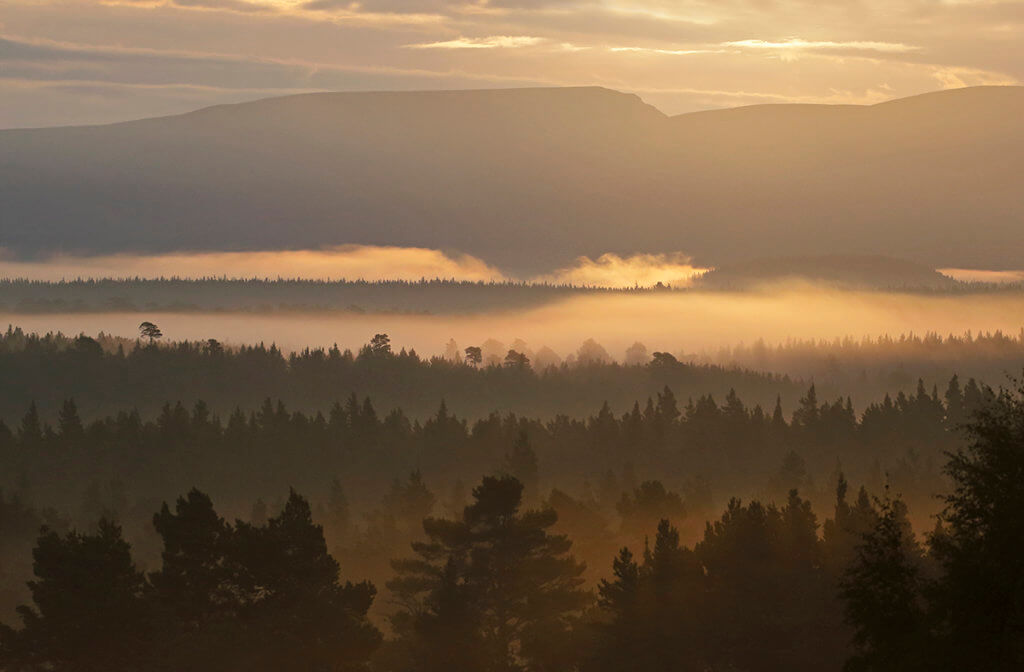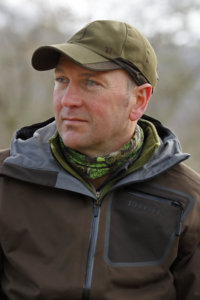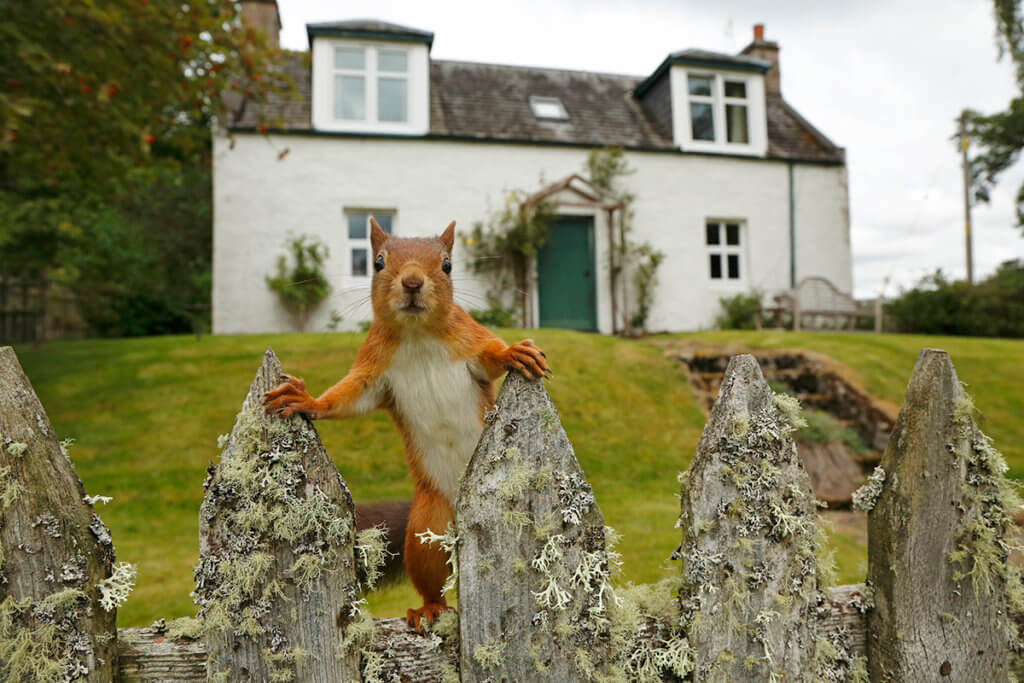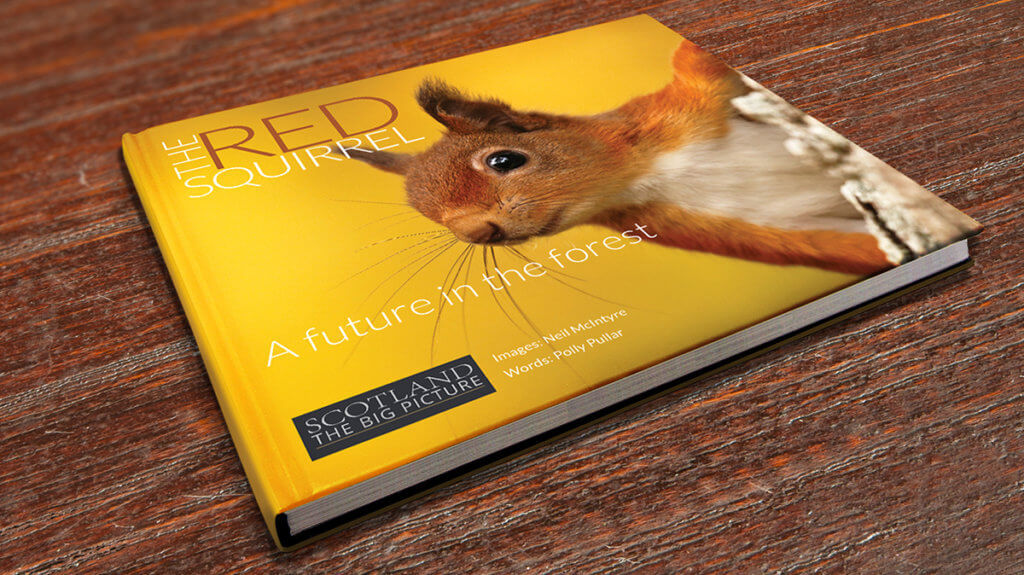
The Red Squirrel: A Future in the Forest
SCOTLAND: The Big Picture is a team of media professionals – photographers, filmmakers, writers and designers – fusing ecological science with visual storytelling to amplify the case for a wilder Scotland. Though undoubtedly spectacular, Scotland is an ecological shadow of its former self. Its turbulent past has shaped its wild places like few other countries and a legacy of degraded land persists, a land that is largely devoid of the rich vegetation and wildlife that given the chance, could once again flourish.
In the first in a series of stunning conservation books, SCOTLAND: The Big Picture has teamed up with Cairngorms photographer Neil McIntyre who has spent the last 20 years documenting the lives of his local red squirrels, deep in the heart of one of Scotland’s largest remaining fragments of Caledonian Pine Forest.

Red squirrels here are prospering but because Scotland’s forests have become fragmented and squirrels can’t cross open ground, they’ve become imprisoned on islands of trees, unable to recolonize their natural range. In this book, the charismatic squirrel is but a messenger; they are an animal tied to the trees and to secure their future, Scotland’s forest fragments need expanding and just as importantly, joining up to allow red squirrels the freedom to roam.
Here Neil describes how he has been able to capture the jaw-dropping images in this book through an understanding of the inter-dependency between his beloved red squirrels and their forest home.
What is it about this intriguing little creature that captures the hearts of so many people? Sometimes that can be hard to define. My very first memories of seeing a red squirrel when I was a small boy are now vague, yet those fleeting glimpses ignited a passion that burns bright to this day.

When my father moved to a new job near Aviemore, in what is now the Cairngorms National Park, sightings became more regular as this is red squirrel heartland. Living over a mile from the main road, I had to cycle each morning to catch the school bus and it was during this daily commute along a wooded lane that I would catch a glimpse of a red flash – or occasionally, a closer, more prolonged view as a squirrel peeped around a tree, almost teasing me into a challenge to find out more. I grew accustomed to these exchanges and started to spend time watching their mischievous antics, sometimes becoming so absorbed I missed the school bus. As the years rolled by, my interest in red squirrels grew and slowly morphed into something of an addiction.
In early adulthood, my passion for wildlife photography began to emerge, and my thoughts immediately turned to the cheeky, charismatic small creature I had grown to love. I wanted to share with others my encounters with this forest sprite and my camera unlocked the door to their secret lives. It quickly became apparent, however, that whilst relying on chance encounters in the forest was fine for squirrel observation, it was pretty useless for achieving the in-depth images I was hoping for. After a few months I had only a handful of mediocre pictures to show for my efforts. I needed a new approach – and although it now seems completely obvious, I started to try and bring the squirrels to me. Food was clearly the answer. I chose a mixed woodland site just a couple of hundred metres from home. With a glorious array of beech, oak and Scots pine, I could see the possibilities were endless, if only I could lure the squirrels to this spot.
By the end of day one, the food lay untouched. It was the same on day two. Then on day three every single hazelnut that I’d put out had vanished. Was it squirrels, or was it wood mice? I just couldn’t tell, as there were no shells left to examine. The next day a shell had been discarded onto a nearby beech stump. It was broken in half without a gnawed hole, the tell-tale sign of a mouse or vole. This was the work of a red squirrel. That same afternoon I set up a hide, and the next morning returned full of eager anticipation. I put out the food and entered the hide expecting a long wait. After just half an hour, I heard the distinctive scratching of a squirrel’s claws gripping a tree trunk as it descended to the ground. I could tell the squirrel was on the pine immediately behind my hide but then, in a flash, it was right in front of my camera, as it sat breaking a nut on an old decaying stump. I hardly dared breathe – but as the first squirrel relaxed, it was joined by another, and an hour later I had witnessed more red squirrel activity than in all the years I’d been watching them.
All this happened back in 1991. Now, many generations of red squirrels later, they still thrive in my local woods, and the daily feeding ritual continues. Over the years they have become so accustomed to me that I no longer need a hide. I can now move about without them reacting, almost becoming part of their secret world – and it is this level of acceptance, even trust, that has allowed me to capture the images in my new book. My intention over all these years has not necessarily been to reveal every facet of squirrel behaviour, but to capture their individual spirit and character. And – crucially – to show the connection between the squirrels and the woodland on which they depend.
A stroll through an old Caledonian pine forest fragment, amongst sturdy trunks and chaotic gnarled branches, where a red squirrel might scamper or sit motionless, tucked close to the mighty frame of an old granny pine, is an experience I never tire of. But these unique forests are now small, isolated and in some cases, dying. There is finally a will to expand and link these islands of woodland and to allow red squirrels to return by themselves to their former strongholds. More native woodland and more red squirrels is surely something worth striving for?
I am very lucky to have squirrels as my neighbours and it is my hope that these images will bring you a sense of their personality, so that you too can feel a part of some of the special moments I have witnessed. What is it about red squirrels? They have become part of my everyday life and I would be lost without them. But – perhaps more than that – red squirrels and the forests in which they make their home represent what it is to be wild and free. What better way is there to live?

The Red Squirrel: A Future in the Forest is published by SCOTLAND: The Big Picture with images by Neil McIntyre and words from celebrated nature writer, Polly Pullar. The book can be ordered here: https://www.scotlandbigpicture.com/Store/books/the-red-squirrel-a-future-in-the-forest

All images © Neil McIntyre/scotlandbigpicture.com
[registration_form]
I think Neil McIntyre is one of the regular contributors to the John Muir Trust “Wild Nature” Diary, which I buy every year. The gorgeous imagery helps counteract the ghastly mundanity of the list of tasks I have to write in it.
As far as those Red Squirrels go, that’s a great cause and a good article, but I think you have overlooked one of the major problems – the lack of suitable housing. Red squirrels are increasingly priced out of the detached cottage market by former City traders moving out of the overpriced loft apartments. The individual depicted in Neil’s photo is almost certainly on a short-term rental contract, susceptible to eviction as soon as a decent offer comes in.
I wish we would do more to help the Red Squirrel. I remember when I was a kid them gradually vanishing and being replaced by grey squirrels. We’ve lost so much.